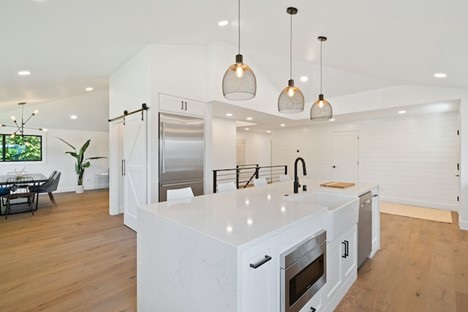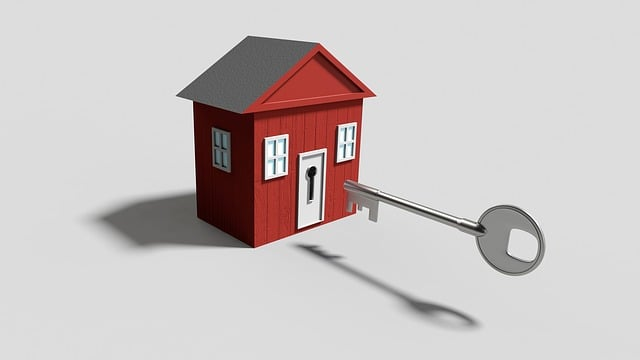Bradley Ransome is a real estate development professional who contributes to several publications on home building, renovations, and design. In the following article, Brad Ransome has compiled a comprehensive guide that covers everything from understanding ROI in real estate investment to the best renovation projects for maximizing returns. Let’s dive into these expert insights and unlock the full profit potential of your investment property!
Understanding ROI in Real Estate Investment
For real estate investors evaluating their investment performances, ROI or return on investment serves as a pivotal metric. The ability to understand ROI in real estate investments is a prerequisite for making well-informed choices about property renovations and upgrades. Maximizing return on investment in rental properties can be achieved by real estate investors through the implementation of strategies like effective marketing, thorough tenant screening, and attractive property presentation.
However, Brad Ransome says leveraging equity in real estate investment comes with potential risks. If the real estate investor does not generate a satisfactory return, they may be at risk of forfeiting all properties used as collateral. Therefore, understanding the factors influencing ROI and how to calculate it for renovations is key to making smart investment decisions.
Bradley Ransome Explains Factors Influencing Returns
When investing in real estate, several factors must be evaluated to determine the potential return on investment, including:
- Location
- Property type
- Market trends
- Expenses
A property’s location can significantly impact its ROI. Proximity to public transportation, shopping centers, and other amenities attractive to renters, as well as good schools, low crime rates, and convenient access to transportation, all contribute to a higher ROI.
The property type also significantly influences the determination of ROI. Some factors to consider include:
- An apartment complex with multiple units may have a greater return on investment compared to a single-family residence, although larger properties may also incur higher costs.
- Market research and analyzing expenses, such as market trends, economic data, vacancy rates, and rental demand, are essential for making informed investment decisions.
- Maintaining awareness of these factors allows real estate investors to concentrate on the properties that will maximize their ROI.
Calculating ROI for Renovations
To determine the ROI for renovations, Bradley Ransome says investors must consider the expenses of improvements and the potential rise in rental income or property value of the renovated property. For example, a new roof can assure tenants of protection from leaks and structural integrity, attracting higher quality renters who value a safe and well-maintained living environment. On the other hand, neglecting roof maintenance can result in substantial costs for property owners and negatively impact the property’s curb appeal, affecting the ability to attract quality tenants.
Calculating the return on investment for a rental property involves subtracting the total expenses from the total income, dividing the result by the total cost of the property, and multiplying by 100 to get the percentage ROI. Investors can maximize their long-term ROI by being proactive with property maintenance and selecting high-impact renovations.
Renovation Projects Providing Bang for the Buck

Maximizing ROI in real estate investments heavily relies on investing in the right renovation projects. Some of the top renovation projects that can boost your property’s value and rental income include enhancing energy efficiency, expanding living spaces, and updating kitchens and bathrooms. These projects not only improve the property’s curb appeal but also cater to the needs and preferences of potential tenants, increasing the likelihood of attracting higher-quality renters.
Bradley Ransome explains that with a focus on these top renovation projects, investors can strategically allocate their resources to areas that have the greatest potential to increase their rental property’s value and appeal to potential tenants. This targeted approach to property upgrades can have a significant impact on the overall return on investment.
Enhancing Energy Efficiency
In today’s eco-conscious world, energy-efficient upgrades are highly sought after by many renters. Implementing energy-efficient solutions, such as switching to LED bulbs and installing solar panels, can not only attract environmentally-conscious tenants but also reduce utility costs, resulting in a higher return on investment.
Moreover, modernizing buildings and enhancing the aesthetic appeal of the exterior can further increase the property’s curb appeal and attract higher quality renters. Real estate investors can maximize their profitability and foster a more sustainable rental property by concentrating on energy-efficient upgrades and improving the property’s curb appeal.
Expanding Living Spaces
Bradley Ransome says expanding living spaces is another effective way to increase rental income and property value. Some ways to do this include:
- Converting underutilized spaces like basements and attics into functional living areas
- Providing additional living space
- Improving functionality
- Increasing natural light
- Creating outdoor living and entertainment areas
These improvements can make your property more attractive to potential renters and increase its overall value.
While the average cost for an attic bedroom conversion is approximately $39,000, the potential benefits can more than offset the initial investment. By converting your attic into a bedroom, you can:
- Increase the value of your home
- Generate rental income
- Create a more attractive and versatile rental property that appeals to a broader pool of potential tenants
Updating Kitchens and Bathrooms
Kitchens and bathrooms are often the most important spaces for potential renters when evaluating a property. Updating these spaces can greatly improve the property’s appeal and functionality, attracting higher-paying tenants. Brad Ransome says some cost-effective kitchen renovation projects that can increase the return on investment of a rental property include:
- Painting kitchen cabinets
- Updating appliances
- Installing a backsplash
- Changing countertops
- Improving kitchen lighting
In addition to kitchen upgrades, bathroom renovation such as installing new fixtures, updating tiles, and incorporating low-flow fixtures can also contribute to the property’s desirability and value. Investors can maximize their return on investment and develop a rental property that outshines the competition by concentrating on these high-impact renovations.
Cost-Efficient Strategies for Property Upgrades

In order to maximize ROI when making property upgrades, Bradley Ransome says it is essential to prioritize high-impact improvements, balance quality and budget, and leverage local market knowledge. These strategies ensure that investors achieve the best possible return on investment while maintaining the property’s appeal to potential renters.
Balancing quality and budget is also crucial to avoid overspending and ensure the property upgrades add value without compromising on quality.
Finally, leveraging local market knowledge helps investors understand the current trends and make informed decisions on property upgrades that cater to the preferences of potential renters.
Bradley Ransome: “Prioritize High-Impact Improvements”
When it comes to maximizing ROI, focusing on high-impact improvements is key. By prioritizing renovations that have the greatest potential to increase property value and enhance tenant satisfaction, investors can optimize their resource allocation and make strategic decisions that yield the highest possible ROI.
Some examples of high-impact improvements include updating kitchens and bathrooms, improving energy efficiency, and increasing living spaces. By focusing on these areas, investors can ensure that their property upgrades have the most significant impact on property value and tenant satisfaction, leading to a higher return on investment.
Balancing Quality and Budget
When renovating an investment property, it is essential to take into account both the quality of materials and labor, as well as the budget. Finding a balance between the two is paramount in order to maximize ROI. Opting for materials and finishes that provide the most cost-effective solution without compromising on quality is the best approach.
Harmonizing quality and budget has numerous advantages, such as:
- Avoiding debt
- Fostering financial soundness, responsibility, and openness
- Optimizing ROI
- Minimizing stress
Bradley Ransome explains that investors can secure a favorable return on investment while preserving the property’s appeal and functionality through meticulous planning and selection of the appropriate materials and finishes.
Leveraging Local Market Knowledge
Utilizing local market knowledge can assist you in comprehending the current trends in the vicinity, as well as the possibility for future growth. This can aid you in making informed decisions regarding the kinds of renovations to implement in order to maximize return on investment.
Staying informed about local market trends and preferences enables investors to make well-informed decisions on property upgrades which will yield the highest return on investment. This knowledge not only helps investors identify opportunities to capitalize on existing market inefficiencies but also allows them to tailor their property upgrades to cater to the specific preferences of renters in their local market.
Managing Renovations for Optimal Returns
Brad Ransome says managing renovations for optimal ROI requires developing a renovation timeline, hiring qualified professionals, and monitoring progress and costs. These three aspects are crucial for ensuring that the renovation project stays within budget and meets expectations, ultimately leading to a higher return on investment.
Investors can successfully manage their renovation projects, optimize their return on investment and maintain the property’s appeal and functionality for potential renters through careful planning and execution of these steps.
Developing a Renovation Timeline
Creating a renovation timeline is essential for organizing and planning the renovation project, including the projected commencement and completion dates and the tasks that must be accomplished in between. By setting realistic deadlines, dividing tasks into smaller steps, and accounting for contingencies, investors can create a realistic timeline for the renovation.
Establishing a renovation timeline has multiple advantages, such as:
- Enhancing organization
- Improving communication
- Minimizing delays
- Managing costs
- Optimizing decision-making
Furthermore, creating a realistic timeline can help minimize vacancy periods and reduce the potential loss of rental income.
Hiring Qualified Professionals
Bradley Ransome says to ensure quality work and timely completion of projects, it is crucial to hire experienced and reliable contractors. Reviewing their credentials and experience, requesting references, and comparing quotes can help in making the right decision when hiring professionals for your renovation project.
Engaging qualified professionals can bring a range of advantages, such as:
- Expert knowledge
- Increased efficiency
- Effective time management
- Decreased staff turnover
- Improved quality of work
- Strengthened team collaboration
By choosing the right real estate professionals, investors can ensure that their renovation projects are completed to a high standard and within the desired timeframe.
Monitoring Progress and Costs
Brad Ransome notes that monitoring progress and costs is essential to guarantee that the project is completed within budget and meets the desired objectives. This involves tracking expenses, setting milestones, and evaluating the efficacy of teaching. The advantages of monitoring progress and costs include staying focused and on track, recognizing areas for enhancement, modifying the plan, observing milestones, measuring success, guaranteeing timely project goals, improving efficiency, potential cost savings, quicker completion times, better quality results, and assessing the effectiveness of teaching.
Investors can guarantee the success of their renovation projects and maximize their return on investment by closely monitoring progress and costs.
Attracting High-Quality Renters for Higher Revenue
The key to maximizing ROI in rental properties is attracting high-quality renters who are willing to pay a premium for a well-maintained and updated property. This can be achieved by showcasing property upgrades, setting competitive rental rates, and providing exceptional tenant experiences. By focusing on these aspects, investors can draw in high-quality renters and maximize their return on investment.
Brad Ransome says screening potential tenants is also essential to ensure they are reliable and responsible, as delinquent tenants who fail to pay rent in a timely manner or cause damages can considerably reduce profits and result in eviction costs. Implementing these strategies can enable investors to attract and retain high-quality renters, ultimately resulting in a higher returns.
Showcasing Property Upgrades
Highlighting property upgrades in marketing materials and rental listings can be beneficial in attracting potential tenants who are seeking a property with certain features or amenities. Detailed descriptions of the upgrades, such as new appliances, fixtures, or other features, can be included in the listings. Additionally, photos and videos can be utilized to demonstrate the property upgrades.
Investors can effectively market their rental properties and draw in higher-quality renters who appreciate a well-maintained and upgraded property by highlighting property improvements. This, in turn, can lead to increased rental income and a higher return on investment.
Setting Competitive Rental Rates
Setting rental rates based on local market data and the value of property upgrades is crucial to maximize profitability. By researching comparable properties in the area and understanding the current rental trends, investors can set rental rates that are competitive and in line with the current market.
Establishing competitive rental rates has numerous advantages, such as:
- Reducing turnover costs
- Attracting high-quality tenants
- Optimizing profitability
- Distinguishing oneself from the competition
Bradley Ransome explains that investors can maximize their return on investment and ensure tenant satisfaction by setting rental rates that reflect the value of the property and its upgrades.
Providing Exceptional Tenant Experiences
Offering excellent customer service and maintaining a well-maintained property are key to retaining high-quality tenants and reducing turnover. Some strategies that can be employed to ensure tenants receive an outstanding experience include:
- Responding promptly to tenant inquiries
- Providing flexible lease terms
- Offering amenities
- Rewarding referrals
Furthermore, conducting regular inspections, addressing any maintenance issues in a timely manner, and maintaining a clean and safe environment can help ensure that the property remains in top condition. Providing exceptional tenant experiences can enable investors to foster long-term relationships with their renters, ultimately resulting in increased tenant retention and consistent rental income.









